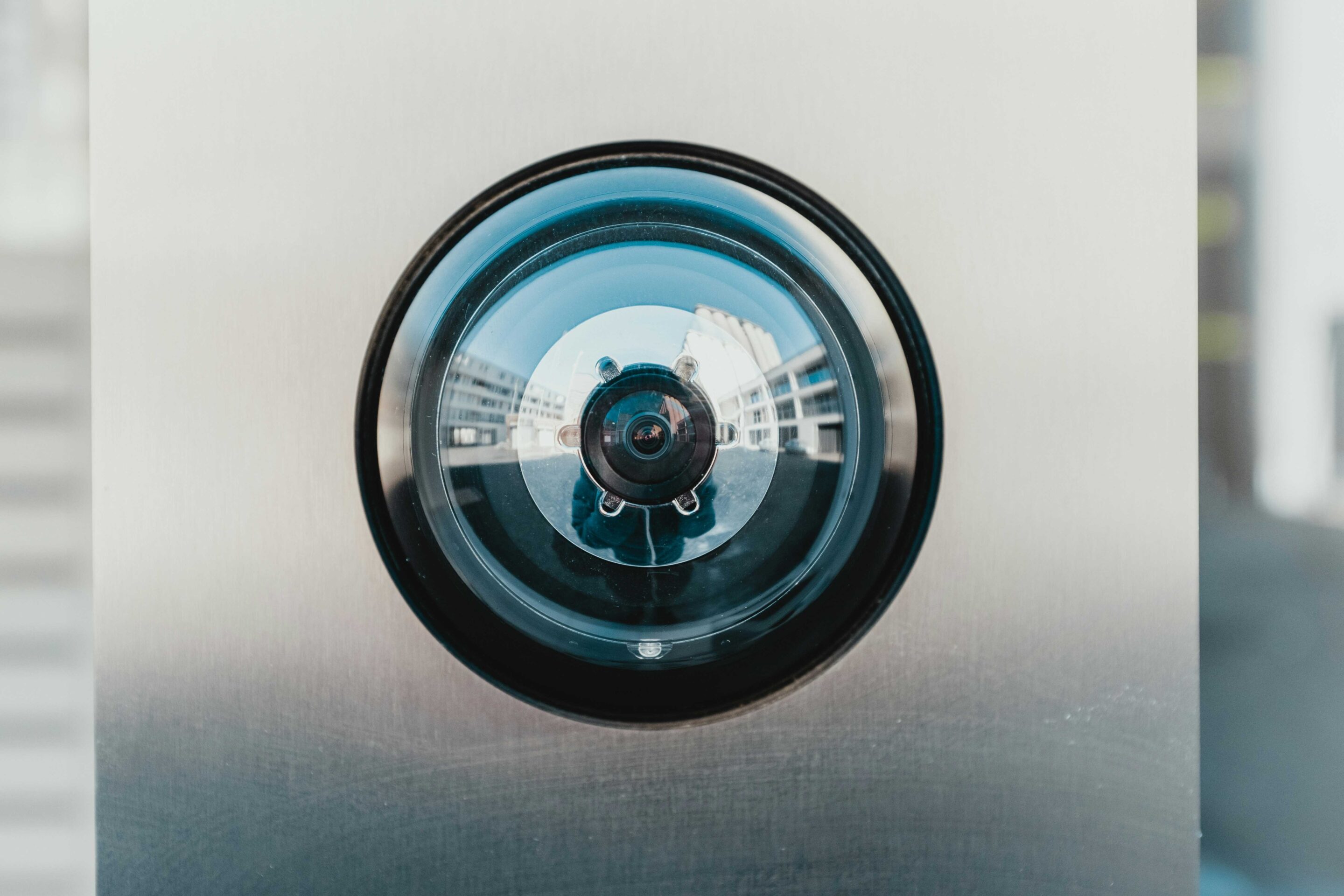Introduction: A Battle for Privacy in the Digital Age
Imagine checking into a hotel or Airbnb, only to realize someone might be secretly watching you. Hidden surveillance cameras have become a growing concern, capturing private moments without consent. Whether in rental properties, public restrooms, or even workplaces, unauthorized video recording is a real threat.
In response, privacy advocates and tech enthusiasts have turned to camera jammers—devices that disrupt surveillance by blocking video transmissions. While these tools offer a sense of security, they also come with serious legal and ethical implications.
This guide explores how camera jammers work, their effectiveness, and legal considerations, while highlighting safer, legal alternatives for privacy protection.
What Are Camera Jammers and How Do They Work?
A camera jammer (or cam jammer) is a device that disrupts video recording by interfering with a camera’s ability to capture or transmit footage. These devices are commonly used to block hidden surveillance cameras, security systems, and mobile phone recordings.
How Do Camera Jammers Work?
Camera jammers function in two primary ways:
1. Signal Disruptors (Wireless Jamming)
These devices block the transmission of signals from wireless cameras to their receivers. They achieve this by disrupting:
✅ WiFi & RF Frequencies – Disables wireless security cameras operating on 2.4 GHz and 5 GHz bands.
✅ CCTV Camera Feeds – Blocks analog and digital closed-circuit television (CCTV) surveillance systems.
✅ Smartphone & Dashcam Recordings – Jams video transmission from mobile phones and car cameras.
2. Physical Obstruction Devices
Rather than interfering with signals, these tools physically prevent a camera from recording:
✅ Laser-Based Camera Blockers – Emit high-intensity light that blinds camera sensors, making footage unusable.
✅ Hybrid Spy Cam Jammers – Combine signal jamming with hidden camera detection for enhanced privacy.
Factors Affecting Effectiveness
Not all camera jammers work universally. Several factors influence their effectiveness:
✅ Type of Camera
- Wireless Cameras – Easily disrupted by WiFi jammers.
- Wired CCTV Systems – Require physical interference (e.g., cutting cables or blocking lenses).
- Smartphone Cameras – Some infrared-based blockers work, but newer models have anti-jamming features.
✅ Jamming Range & Power
- Portable Jammers (10–20 ft.) – Ideal for small personal spaces.
- High-Power Jammers – Can block cameras across a large radius, but are often restricted by law.
✅ Legal Considerations
- Many countries prohibit camera jammers due to security concerns.
- Government & military agencies sometimes use them for official security operations.
➡ Read the FCC’s guide on wireless interference regulations here.
Hidden Camera Detection
Some anti-jammer cameras and jammer detection apps can identify RF jamming attempts and alert users to potential surveillance risks.
Download a Hidden camera detector app to scan for hidden devices.
Tradeoffs and Challenges
| Aspect | Pros | Cons |
|---|---|---|
| Privacy Protection | Prevents unauthorized surveillance in homes, hotels, or rental spaces. | Can be misused for criminal purposes, evading legitimate security. |
| Cost & Effectiveness | Affordable options exist for personal use. | Low-cost devices may not effectively block advanced security cameras. |
| Discreetness | Compact and easy to carry. | High-power jammers are bulky and easily noticeable. |
| Legality | Some industries use jammers for authorized purposes. | Illegal in most regions, with severe penalties for use. |
Detecting Hidden Cameras Before Using a Jammer
Before using a camera blocker, it’s wise to consider non-invasive detection methods. After all, identifying surveillance threats before attempting to block them ensures a more effective approach.
- RF Detectors – Identify hidden surveillance devices transmitting wireless signals.
- Lens Reflection Finders – Use LED lights to spot camera lenses in a room.
- Network Scanners – Detect unknown IP cameras connected to WiFi networks.
➡ Download a camera jammer detector app to scan for hidden devices.
Limitations of Camera Jammers
Even high-quality camera signal blockers have their weaknesses. Despite their intended purpose, these devices are not foolproof and may fail under certain conditions. Moreover, as surveillance technology continues to advance, many cameras are becoming increasingly resistant to jamming attempts. For this reason, relying solely on jammers for privacy protection is not always effective.
1. Ineffective Against Wired Cameras
- CCTV camera jammers struggle against hardwired surveillance systems. Unlike wireless cameras, which rely on radio frequencies, wired systems use direct connections, making them immune to RF-based jamming.
- Additionally, disrupting a wired system would require physical interference, such as cutting cables or obstructing the camera lens. As a result, most security networks in high-risk areas (banks, government buildings, and airports) use wired setups to prevent jamming.
2. Battery Life Issues
- Portable jammers drain power quickly. Since most handheld jammers operate on rechargeable batteries, they have a limited lifespan before needing a recharge.
- Furthermore, the higher the jamming power, the faster the battery drains. This means users may only have a small window of effectiveness before the jammer becomes useless.
- In contrast, high-power jammers that can cover large areas typically require constant external power sources, making them far less portable.
3. Advanced Encryption & Frequency-Hopping
- Modern cameras can adapt to interference, reducing jammer effectiveness. Newer surveillance cameras often use encrypted signals, making it difficult for jammers to disrupt their feeds.
- Additionally, some security cameras use frequency-hopping spread spectrum (FHSS) technology, which continuously switches between different frequencies. As a result, a standard jammer may be unable to keep up with these changes.
- On top of that, AI-powered cameras are being developed to detect and respond to interference, ensuring surveillance remains active even when jamming attempts are made.
4. Legal and Ethical Risks
- Even if a jammer works, using one could lead to serious consequences. In most countries, camera jammers are illegal due to their ability to interfere with security and emergency communication systems.
- Not to mention, jammers can be misused by criminals to disable security cameras, making them a potential public safety risk. Because of this, authorities strictly regulate or ban their use in residential and commercial spaces.
Alternatives to Signal Jammers
Instead of using video recording jammers, you might want to consider these safer and legal alternatives. Not only do these methods comply with the law, but they also offer reliable privacy protection.
- ✅ Physical Camera Covers – Use webcam covers, lens blockers, or anti-surveillance stickers for laptops, smartphones, and smart TVs.
✅ Faraday Bags – Block electronic signals to prevent unauthorized surveillance or tracking.
✅ Legal Action – If you suspect unauthorized surveillance, report it to authorities instead of using illegal blockers.
✅ RF Detectors & Hidden Camera Scanners – Identify hidden cameras before needing a jammer.
➡ Download a camera jammer detector app to scan for hidden devices.
The Rise of Drone Camera Blockers
With drones increasingly used for aerial surveillance, it’s no surprise that drone camera blockers are in demand. As a result, various counter-surveillance technologies have emerged to combat these threats.
- Disrupt GPS, WiFi, or RF signals – Forcing drones to land or return.
- Raise Legal Issues – Most governments ban civilian use of drone jammers due to aviation safety risks.
➡ Explore drone security threats in “Drone Hacking & Defense Strategies”.
FAQs: Addressing Key Concerns
Q: How can I detect if my security camera is being jammed?
A: If you notice sudden signal loss, static interference, or erratic behavior in your security feed, this may indicate a jamming attempt. Moreover, checking for unexpected WiFi disruptions or unusual device behavior can provide further clues.
Q: How can I protect my surveillance system from jamming?
A: To minimize risk, use wired connections, encrypted signals, and frequency-hopping technologies for protection. Additionally, installing anti-jamming detectors can help monitor potential interference attempts.
Q: Are camera jammers legal?
A: In most cases, camera jammers, video recording jammers, and mobile signal blockers are illegal. Furthermore, penalties for using them can be severe, including hefty fines or even criminal charges.
Q: Do infrared camera jammers work on all cameras?
A: Not necessarily. Some advanced cameras can filter out infrared light interference. However, newer surveillance models are becoming more resistant to such blocking techniques.
Q: What’s the best way to prevent hidden surveillance?
A: For maximum privacy, use RF detectors, lens covers, and secure networks. In addition, performing regular sweeps with professional detection tools can help ensure long-term security.
Q: Can jammers affect other electronic devices?
A: Yes, and this is a major concern. Camera jammers, especially high-power ones, can interfere with WiFi routers, mobile networks, GPS systems, and even emergency communication channels. Therefore, their use is highly regulated in most regions.
Q: Is there a way to jam cameras without breaking the law?
A: Fortunately, yes. Instead of using illegal jammers, you can opt for physical camera covers, signal-blocking Faraday bags, or privacy films that obstruct recordings without violating any regulations.
Q: How effective are camera jammers against night vision cameras?
A: Interestingly, many night vision cameras rely on infrared (IR) technology, which some jammers can block using IR interference. However, high-end surveillance cameras are designed to counter such interference, making jamming less effective.
Q: Are there any mobile apps that can detect jamming attempts?
A: Absolutely. Some apps can scan for unusual RF interference or WiFi disruptions, helping identify if a jammer is nearby. However, their effectiveness depends on the type of jamming technology being used.
Q: What industries legally use jammers?
A: Interestingly, certain industries and organizations are permitted to use jammers for security purposes. For example, government agencies, military operations, and even some correctional facilities use them to prevent unauthorized surveillance or drone intrusions. Nonetheless, such use is highly restricted and requires official authorization.
Q: Can a jammer block all types of cameras at once?
A: Not really. While some high-end jammers can disrupt multiple frequencies, no single device can block every camera type simultaneously. As a result, wired CCTV cameras, encrypted surveillance systems, and frequency-hopping IP cameras are often difficult to jam effectively.
Conclusion: Balancing Privacy, Ethics, and Legality
The rise of camera jammers highlights the ongoing battle between personal privacy and public security. While these tools can safeguard against spy cameras, they also pose legal risks and ethical dilemmas.
Before making a decision, it’s crucial to consider:
✅ Local laws and potential penalties.
✅ Non-invasive solutions like hidden camera detection.
✅ The ethical balance between privacy and public safety.
Ultimately, as surveillance technology advances, understanding legal and ethical boundaries will be essential in protecting personal security responsibly. On the other hand, failing to stay informed about new regulations and countermeasures could lead to unintended legal consequences. For this reason, staying updated on evolving surveillance laws and privacy protection methods is more important than
➡ Want more insights on security technology? Explore our Emerging Tech Blog!






